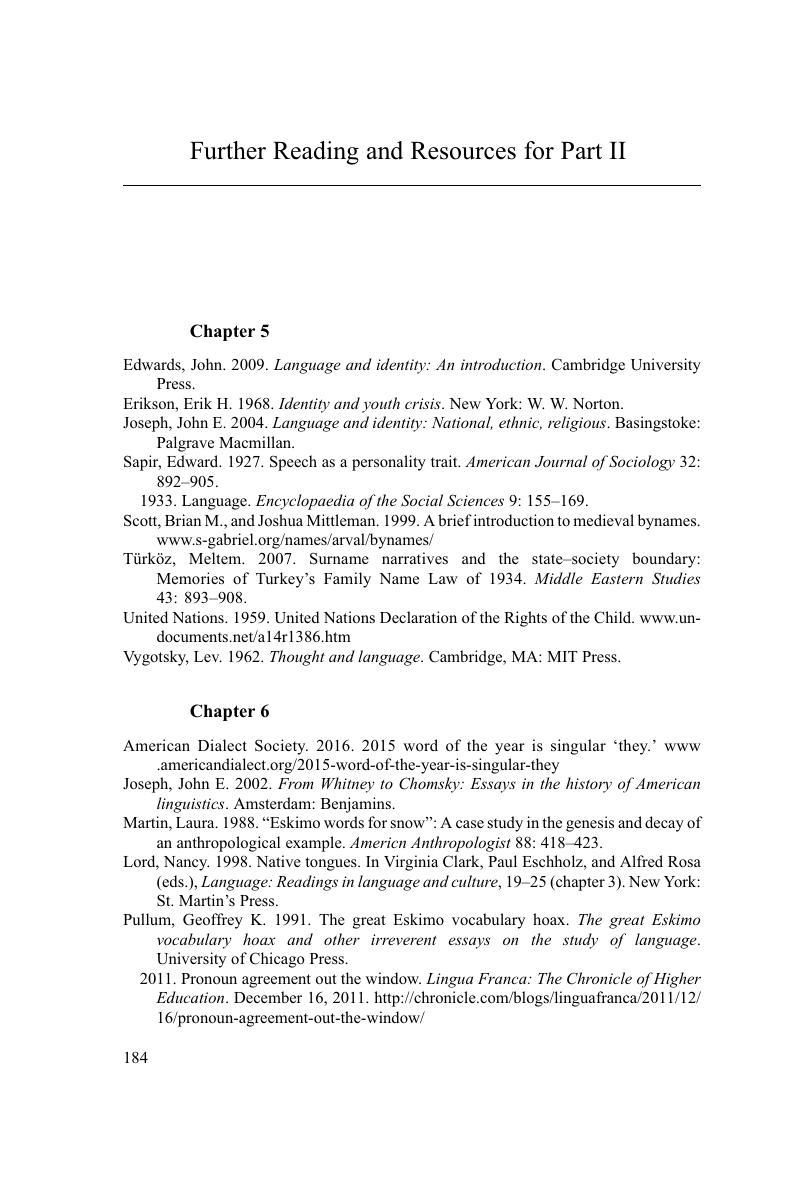Book contents
- Language Conflict and Language Rights
- Language Conflict and Language Rights
- Copyright page
- Dedication
- In Memoriam
- Contents
- Figures
- Tables
- Preface and Acknowledgements
- Introduction
- Part I Language and the Speaker
- Part II Language in the World
- 5 Language and Personal Identity: Personal Names in the World
- 6 Language and Cultural Identity: Language and Thought
- 7 Language and National Identity
- 8 The Role of Writing Systems
- 9 Framing Language Rights in the Context of Human Rights
- Further Reading and Resources for Part II
- Part III A Typology of Language Conflicts
- Part IV Language Endangerment, Extinction, and Revival
- References
- Index of Names
- Index of Languages, Nationalities, Ethnicities, and Places
- Index of General Concepts and Events
- References
Further Reading and Resources for Part II
from Part II - Language in the World
Published online by Cambridge University Press: 02 August 2018
- Language Conflict and Language Rights
- Language Conflict and Language Rights
- Copyright page
- Dedication
- In Memoriam
- Contents
- Figures
- Tables
- Preface and Acknowledgements
- Introduction
- Part I Language and the Speaker
- Part II Language in the World
- 5 Language and Personal Identity: Personal Names in the World
- 6 Language and Cultural Identity: Language and Thought
- 7 Language and National Identity
- 8 The Role of Writing Systems
- 9 Framing Language Rights in the Context of Human Rights
- Further Reading and Resources for Part II
- Part III A Typology of Language Conflicts
- Part IV Language Endangerment, Extinction, and Revival
- References
- Index of Names
- Index of Languages, Nationalities, Ethnicities, and Places
- Index of General Concepts and Events
- References
Summary

- Type
- Chapter
- Information
- Language Conflict and Language RightsEthnolinguistic Perspectives on Human Conflict, pp. 184 - 188Publisher: Cambridge University PressPrint publication year: 2018

